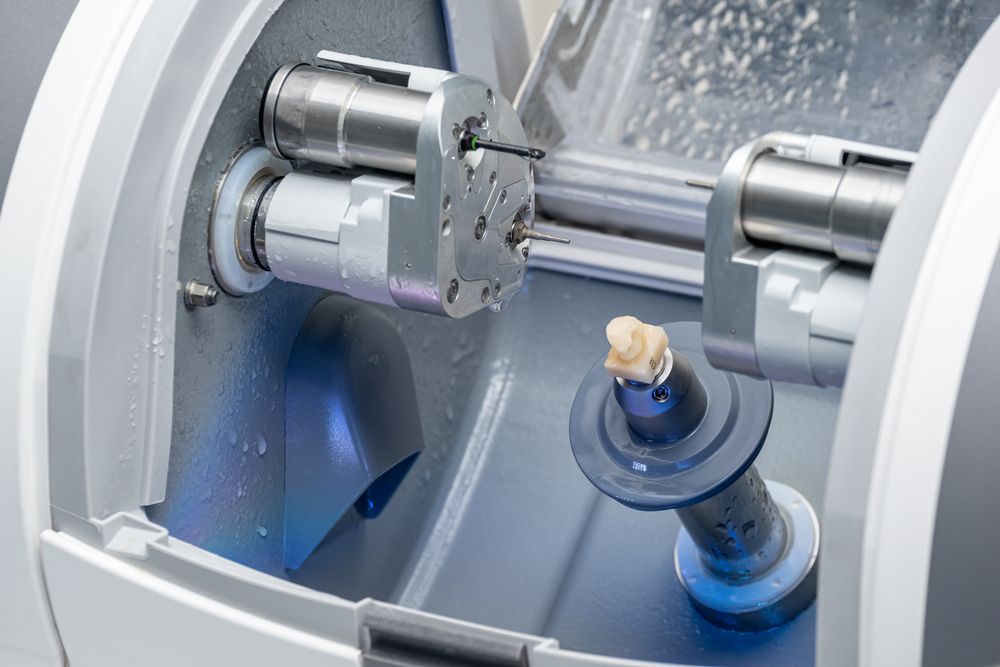At Tulsa Precision Dental in Tulsa, OK, dental technology has advanced by leaps and bounds, transforming how restorative treatments are planned and executed. Among these innovations, CAD/CAM technology stands out as a game changer, especially in the fabrication of dental crowns. Dr. Chris Vinson’s community benefits from this cutting-edge approach that merges computer-aided design and manufacturing to deliver crowns that are both precise and efficient. Understanding the science and benefits behind CAD/CAM crowns offers valuable insight into the future of dentistry and patient care.
Understanding CAD/CAM Technology in Dentistry
CAD/CAM stands for Computer-Aided Design and Computer-Aided Manufacturing. In dentistry, this technology allows dental professionals to digitally design and create restorations like crowns with remarkable accuracy. The process begins with a digital scan of the patient’s tooth, eliminating the need for traditional impression materials that can be uncomfortable and less precise. Using specialized software, dentists or dental technicians then create a virtual model of the tooth, tailoring every contour to fit the patient’s unique dental anatomy.
Once the design is finalized, the data is sent to a milling machine or 3D printer which fabricates the crown from blocks of ceramic or composite resin. This process ensures a high level of precision that manual methods cannot easily achieve. The precision in design and fabrication minimizes gaps between the crown and the natural tooth, which is crucial in preventing bacteria buildup and subsequent decay. CAD/CAM technology streamlines the crown creation timeline, often allowing for same-day restorations, which significantly improves the patient experience by reducing multiple visits.
Advantages of CAD/CAM Crowns Over Traditional Methods
The precision offered by CAD/CAM technology directly translates into better-fitting crowns, which enhances both the durability and functionality of the restoration. Traditional crowns made using impressions and molds are prone to slight inaccuracies due to material shrinkage or human error during manual crafting. In contrast, CAD/CAM crowns have a superior fit due to their digital design foundation, which helps maintain the natural bite and alignment of teeth. This not only preserves oral health but also improves overall comfort for the patient.
Another significant advantage is efficiency. The entire process—from scanning to milling—can be completed in a single appointment. This eliminates the need for temporary crowns and reduces waiting periods, which can be inconvenient and uncomfortable for patients. Moreover, CAD/CAM technology enables easier replication of restorations if a crown ever needs repair or replacement. The digital file remains stored, ready to be reused or adjusted without starting from scratch.
In terms of aesthetics, CAD/CAM crowns can be crafted from high-quality ceramic materials that closely mimic the translucency and color of natural teeth. This provides a natural, appealing appearance that blends seamlessly into the patient’s smile. Patients no longer have to choose between function and beauty, as CAD/CAM crowns deliver both.
The Role of Tulsa’s Environment in Embracing CAD/CAM Technology
Tulsa, OK, like many urban centers, benefits from the integration of advanced dental technologies such as CAD/CAM. Access to modern dental tools in Tulsa means that local patients can receive state-of-the-art care without traveling far. The technological sophistication seen in Tulsa’s dental practices reflects a commitment to improving oral health outcomes while adapting to patients’ busy lifestyles.
The availability of CAD/CAM technology in Tulsa also demonstrates the region’s readiness to adopt innovations that reduce healthcare disparities by offering faster, more comfortable treatments. In communities where access to multiple dental visits can be challenging, the ability to complete a crown restoration in one day is particularly valuable. This aligns well with the lifestyle needs of Tulsa’s diverse population, ensuring that high-quality dental care is both accessible and efficient.
Future Perspectives: CAD/CAM’s Impact on Dentistry
As CAD/CAM technology continues to evolve, the future of dental restorations looks promising. Integration with 3D printing advancements, enhanced software algorithms, and new biocompatible materials will further improve the quality and customization of dental crowns. Research is ongoing to explore even more efficient ways to design and manufacture dental prosthetics, potentially expanding beyond crowns to full-mouth reconstructions.
Additionally, the digital workflow allows for seamless communication between dental offices and laboratories worldwide, facilitating global collaboration and innovation in treatment planning. This digital revolution in dentistry supports the trend toward personalized care, where restorations are tailored not just to fit but also to complement each patient’s unique oral environment.
Patients in Tulsa and beyond can anticipate more comfortable, faster, and longer-lasting dental solutions as CAD/CAM technology matures, enhancing both health and confidence in their smiles.
In summary, CAD/CAM technology represents a significant leap forward in dental crown fabrication by combining digital precision with efficient manufacturing. Tulsa Precision Dental in Tulsa, OK, symbolizes the progress of modern dentistry in embracing these advancements. Understanding this technology helps patients appreciate how innovations improve both treatment outcomes and experiences.
Resources
McLaren, E., & Choi, J. (2020). Digital Dentistry: The Evolution of CAD/CAM Technology. Journal of Prosthodontics, 29(6), 495-501.
Powers, J. M., & Sakaguchi, R. L. (2017). Craig’s Restorative Dental Materials (13th ed.). Elsevier.
Patel, N., & Haralur, S. B. (2018). Impact of CAD/CAM Technology on Prosthodontics: A Review. International Journal of Prosthodontics and Restorative Dentistry, 8(3), 95-101.




